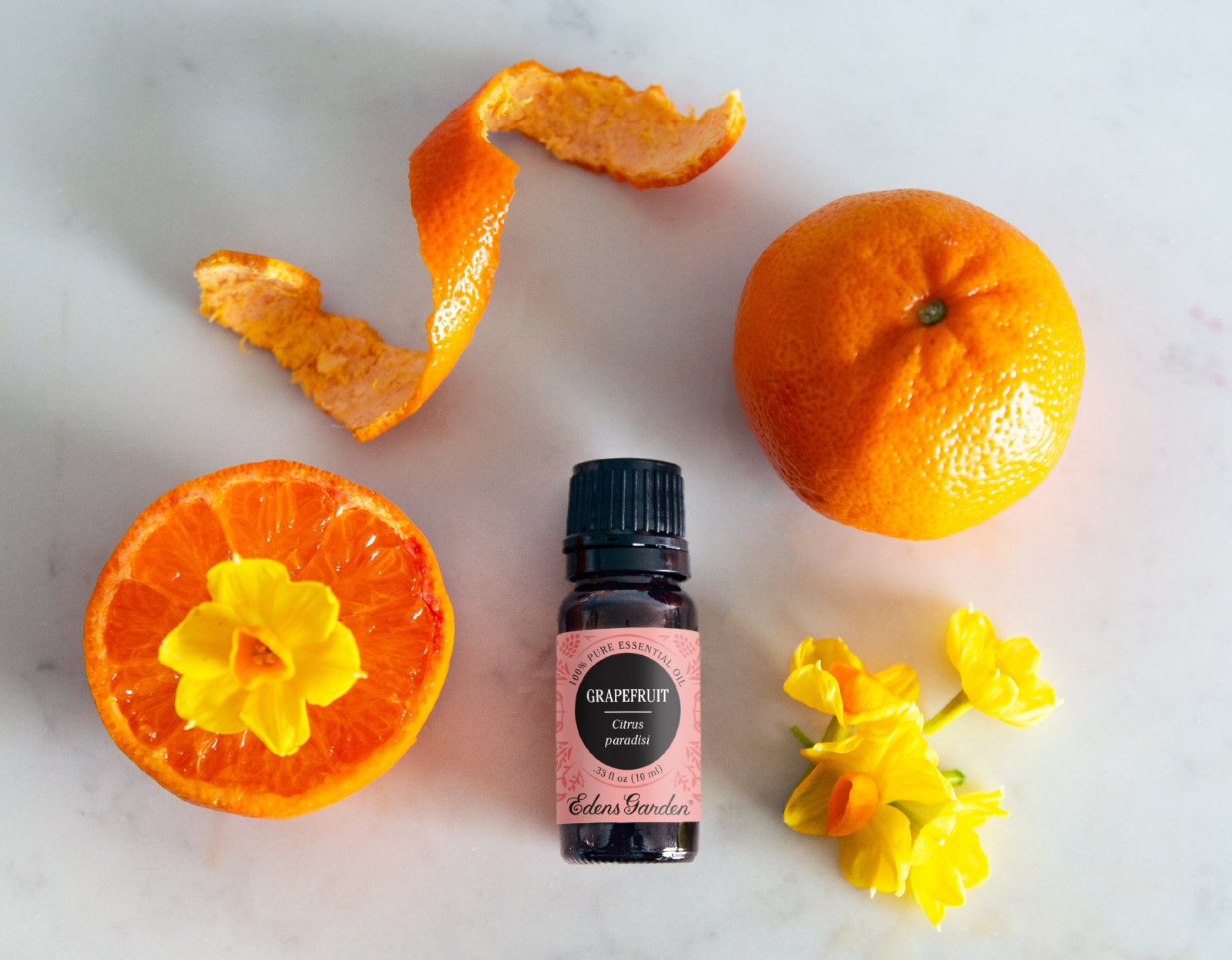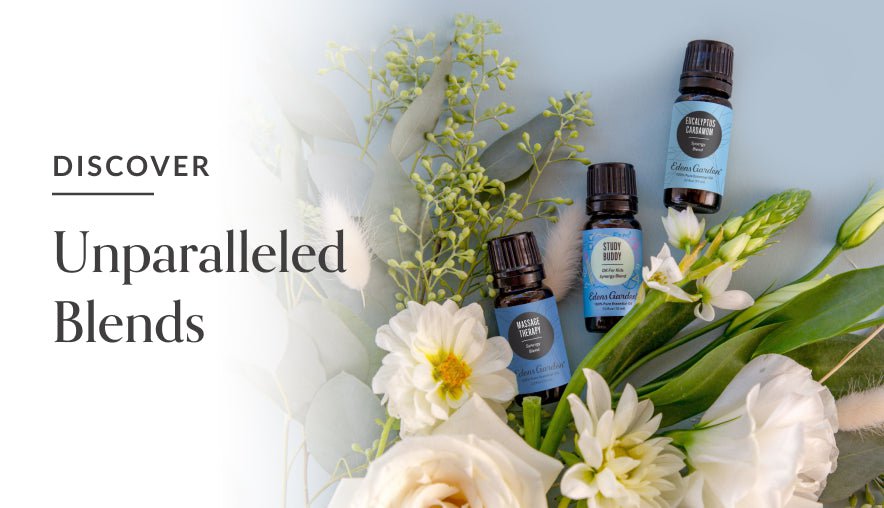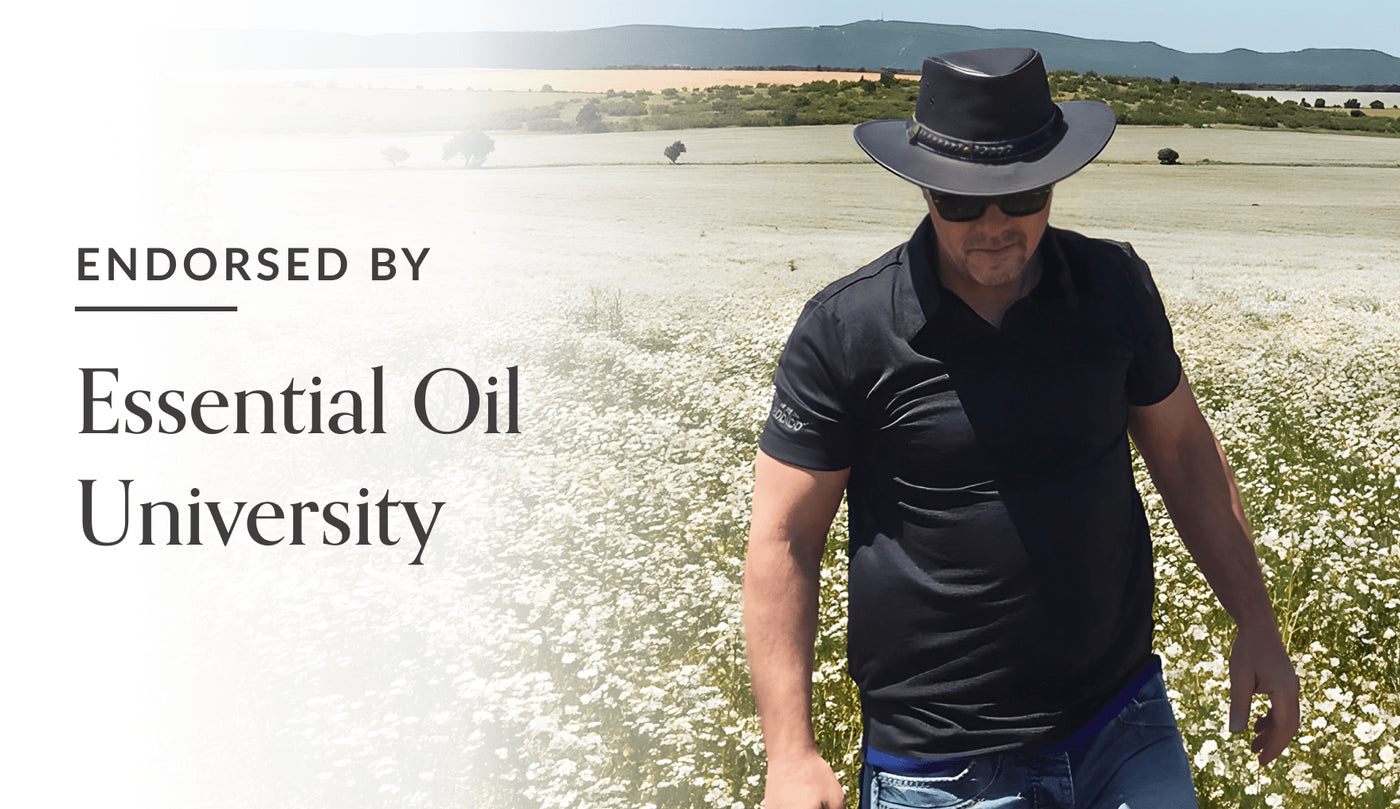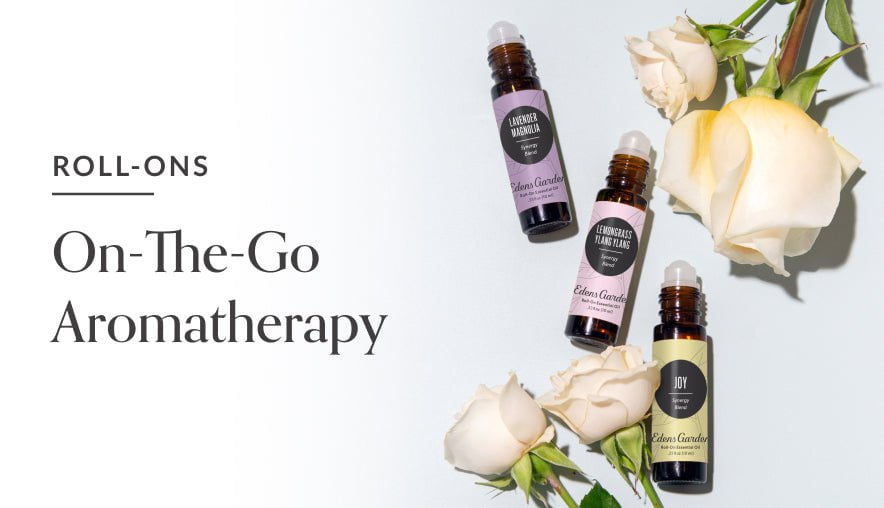Phototoxic Essential Oils and What You Need to Know About Them

Here at Edens Garden, we love summer time. Any excuse we have to get down the beach, we’re there. And in the aromatherapy world, nothing beats the aroma of citrus oils to evoke a sunshiny mood. Knowing this, we at EG feel it is important to bring phototoxic oils to your attention. You know that sunscreen can protect your skin from harmful UV rays on a regular basis, but what other factors could potentially harm your body while out in the summer sun?
Phototoxicity - What Is It?
Some essential oils contain molecules called furanocoumarins (FCs), which become activated following UV exposure. While not all FCs are phototoxic, there are a few to look out for: Psoralen, methoxsalen, bergapten and oxypeucedanin. When enough of these compounds are present in essential oils, exposure to sun rays can cause inflamed skin similar to a sunburn, and extreme blistering in severe cases. These painful effects can peak 36-72 hours after UV exposure, followed by skin discoloration that can last for months. You may have experienced similar reactions if you’ve ever gotten fresh lime or lemon juice to your skin before spending time in the sun. It’s also important to note that, while we don’t recommend internal use of essential oils, ingesting phototoxic essential oils can also put you at risk of burns when exposed to UV rays.
Which Oils are Phototoxic?
The most common type of phototoxic oils are cold-pressed citrus oils, though not all citrus oils are phototoxic. Certain citrus oils can also have their furanocoumarins significantly reduced by steam distilling the oil rather than by cold-pressing. And though it’s less common, non-citrus oils can also be phototoxic.
We’ve compiled a helpful list from Tisserand and Young’s book, Essential Oil Safety, to help you identify phototoxic essential oils.
Phototoxic Essential Oils
- Angelica Root
- Bergamot (Cold-pressed)
- Bitter Orange (Cold-pressed)
- Cumin
- Fig Leaf Absolute
- Grapefruit (Cold-pressed)
- Key Lime (Cold-pressed)
- Lemon (Cold-pressed)
- Lemon Verbena
- Lime (Cold-pressed)
- Mandarin Leaf
- Rue
- Tagete
Potentially Phototoxic Essential Oils (use with caution)
- Angelica Root Absolute
- Angelica Root C02 extract
- Celery Leaf
- Celery Seed Absolute
- Clementine (data highly limited)
- Combava Fruit
- Cumin Seed Absolute
- Cumin Seed CO2 Extract
- Khella
- Lovage Leaf
- Parsnip
- Skimmia
Non-phototoxic Citrus Essential Oils (negligible risk)
- Bergamot (FCF)
- Blood Orange
- Lemon (steam distilled)
- Lime (steam distilled)
- Mandarin
- Neroli
- Petitgrain
- Satsuma
- Sweet Orange
- Tangelo
- Tangerine
- Yuzu
How to Protect Yourself
Don’t let phototoxicity stop you from a citrus-scented summer. Personal inhalers, diffusers, and diffuser jewelry are great ways to carry your favorite aromas around with you. If topical application is preferred, Tisserand & Young recommend waiting 12-18 hours before exposing yourself to UV rays. Tanning beds should be avoided entirely. Reaching for the non-phototoxic versions of risky oils is always preferred as well.
Phototoxic oils in rinse-off products like body washes and shampoos are deemed safe (so long as you wash thoroughly). You can also apply the oils under SPF safe clothing.
What’s more? There are also dilution rates that are considered “safe” and can be used to avoid a phototoxic reaction. Any percentage higher than that listed is considered high risk:
Maximum Dilution Levels for Phototoxic Oils
Angelica Root: 0.8%
Bergamot (cold-pressed): 0.4%
Bitter Orange: 1.25%
Cumin: 0.4%
Fig Leaf Absolute: no safe dilution
Grapefruit: 4%
Key Lime: 0.7%
Lemon (cold-pressed): 2%
Lemon Verbena: no safe dilution
Lime (cold-pressed): 0.7%
Mandarin Leaf: 0.17%
Rue: 0.15%
Tagete: 0.01%
Even with these safe dilution levels, we would recommend avoiding any unnecessary topical applications if UV exposure is expected. It’s important to note that these exact measurements can be difficult to calculate correctly. If you are unsure of the percentages of these oils in blends, it’s best to err on the side of caution and avoid applying them topically before sun exposure. More than one potentially phototoxic oil in a single blend can also increase the risk for photosensitivity from each oil. As noted by Tisserand and Young, it’s also best to avoid these oils entirely if coupled with a high dietary consumption of grapefruit juice, celery or parsnips.
Summertime is best enjoyed in a relaxed, carefree manner. We always encourage mindfulness and safety when using essential oils. Educating oneself is the key to avoiding adverse reactions. When used correctly, essential oils are a beautifully beneficial addition to any lifestyle.
Leave a comment (Comments will be approved before showing up)
2 comments
Suzanne
Is it possible to steam distill grapefruit essential oil like the lemon and lime ones?




Edens Garden
September 7, 2021 at 11:14 am
Hi Suzanne! Yes, Grapefruit can be steam distilled to create a non-phototoxic Grapefruit oil.